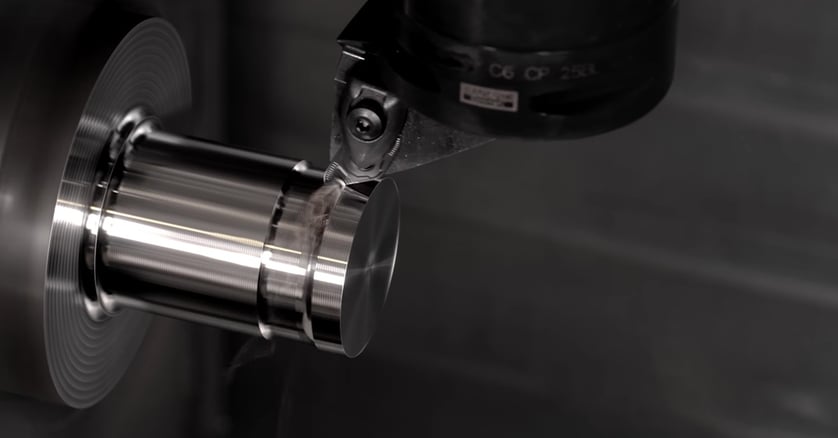
The traditional approach to a turning process involves cutting from the end of a workpiece toward the chuck. As a result, the entering angle of the cutting tool must be around 90º to enable the tool to reach the shoulder. Although using less of an entering angle would increase the feed rate, such an approach typically produces undesirably long, curved chips.


 CNC machine cutting tools are perishable by nature, but that doesn’t mean you can’t take steps to prolong the life of your cutting tools. Not only are the tools, themselves, an expense but replacing worn tools can interrupt production and add labor costs. Not replacing worn tools in a timely manner can also impact the quality of a workpiece.
CNC machine cutting tools are perishable by nature, but that doesn’t mean you can’t take steps to prolong the life of your cutting tools. Not only are the tools, themselves, an expense but replacing worn tools can interrupt production and add labor costs. Not replacing worn tools in a timely manner can also impact the quality of a workpiece. For more than 90 years Gosiger sales engineers and applications specialists have worked with hundreds of machine tool customers to help them select the best equipment for their manufacturing operations. During this process they share what they believe are the most important characteristics to have in a CNC machine for their specific applications. However, regardless of the customer’s unique requirements, here are the top 7 fundamentals that these CNC shop owners and production managers in companies of all kinds and sizes want in a new machine tool.
For more than 90 years Gosiger sales engineers and applications specialists have worked with hundreds of machine tool customers to help them select the best equipment for their manufacturing operations. During this process they share what they believe are the most important characteristics to have in a CNC machine for their specific applications. However, regardless of the customer’s unique requirements, here are the top 7 fundamentals that these CNC shop owners and production managers in companies of all kinds and sizes want in a new machine tool. Gosiger customers who choose Okuma CNC machine tools benefit from a great many proprietary functions that are built into many Okuma lathes, turning centers, multitasking machines, and machining centers. These functions are part of the company’s Intelligent Technology initiative to make machining faster, easier and more profitable. One of these is the Machining Navi system that reduces the affects of chatter by optimizing spindle speed for milling and machining, and by expanding the chatter-free zone in lathes.
Gosiger customers who choose Okuma CNC machine tools benefit from a great many proprietary functions that are built into many Okuma lathes, turning centers, multitasking machines, and machining centers. These functions are part of the company’s Intelligent Technology initiative to make machining faster, easier and more profitable. One of these is the Machining Navi system that reduces the affects of chatter by optimizing spindle speed for milling and machining, and by expanding the chatter-free zone in lathes.